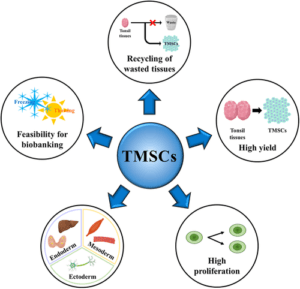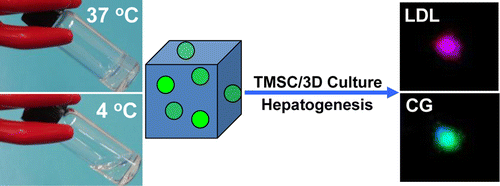
Discarded tonsil tissue offer new hope for treating liver disease

Scientists look at the possibility of growing tonsil-derived mesenchymal stem cells on a 3D gel matrix that may one day be injected to regenerate liver tissue.
Tonsil-derived mesenchymal stem cells
We’ve all heard about tonsillectomies. It is a common practice used to remove the tonsil tissue to treat recurrent throat infections in children. After surgery, this tissue is usually thrown out, just like the umbilical cord and the placenta, which used to be discarded after birth.
But now we know that discarded tonsil tissue is also a valuable source of stem cells, called mesenchymal stem cells (MSCs). Tonsils are an attractive source of MSCs because there’s no need for unnecessary surgery or ethical concerns associated with harvesting them.
Mesenchymal stem cells are able to rapidly divide and regenerate into a variable of different cell types in our bodies. TMSCs (or tonsil-derived mesenchymal stem cells) in particular can give rise to bone, cartilage, muscle, tendon, neurons, and liver cells (hepatocytes).
 Why liver disease?
Why liver disease?
Liver disease refers to conditions that affect the function of the liver. A variety of factors, such as alcohol and viral infections, can damage the liver. Over time the damage leads to scarring (cirrhosis) and liver failure.
Right now, the only curative treatment for liver disease is a liver transplant. The researchers involved in this study wanted to look at injecting TMSCs as an alternative treatment method.
What did the study find?
Once the tonsil stem cells were isolated, the scientists needed a way to grow them in a 3D environment that mimicked real liver tissue. So they encapsulated these stem cells in a liquid that will turn into a gel at body temperature. Next, they added factors to encourage these cells to grow into liver cells.
Amazingly, when they heated this mixture to an average body temperature, they were able to generate a 3D bio gel that had functioning liver cells. With some tweaks, this method can be used to create injectable tissue that will reengineering damaged liver tissue to treat liver disease.

References
Kim, S, Park, MH, Moon, HJ. et al. (2014). Polypeptide Thermogels as a Three Dimensional Culture Scaffold for Hepatogenic Differentiation of Human Tonsil-Derived Mesenchymal Stem Cells. ACS Appl. Mater. Interfaces 2014, 6, 19, 17034–17043. doi: https://doi.org/10.1021/am504652y.
Related Posts

Novel Cord Blood Stem Cell Treatment Leads to HIV Remission


Stem Cell Transplantation Shows Potential in Stroke Recovery









